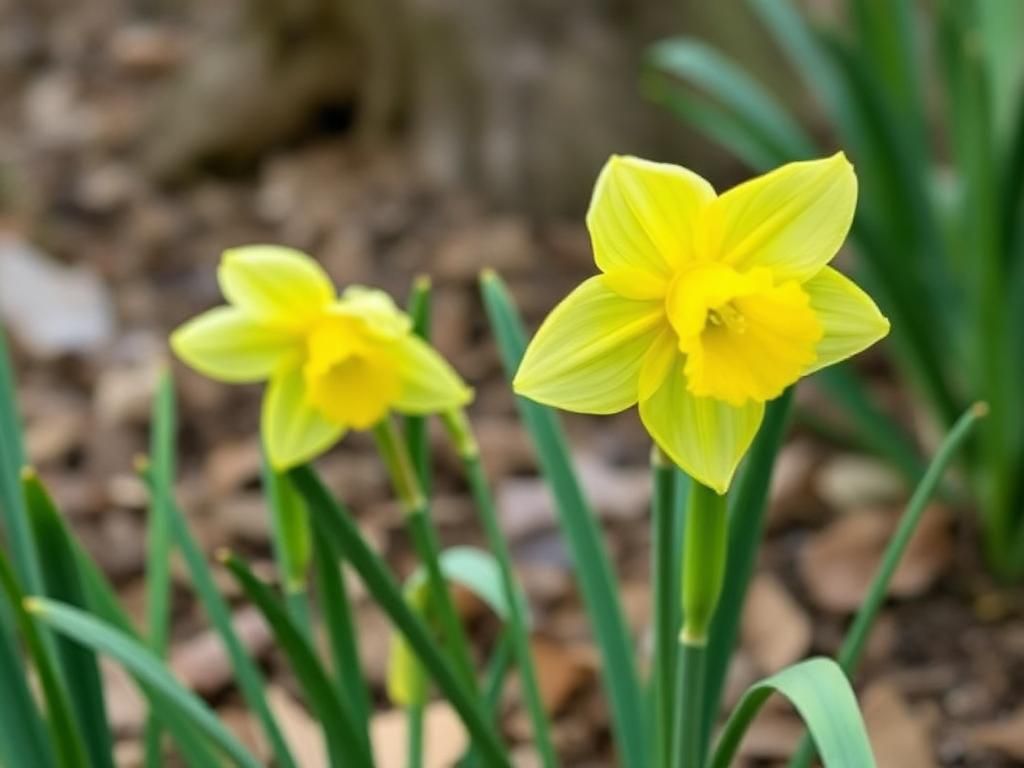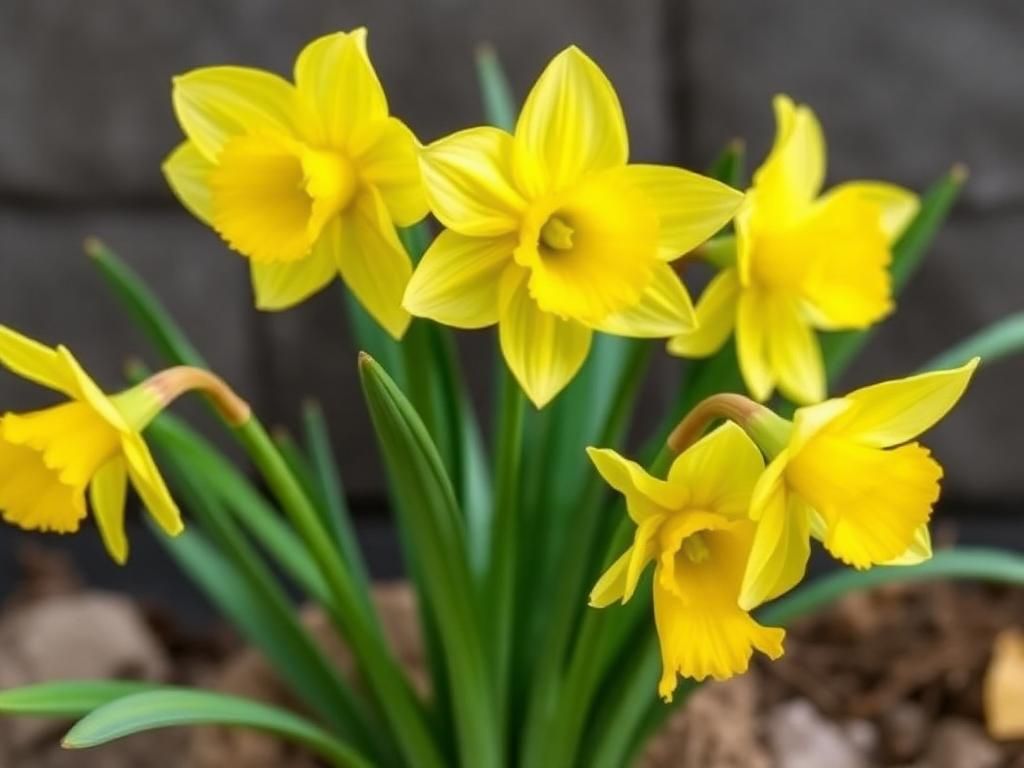Flowers have always played a significant role in human culture and symbolism, often representing emotions, occasions, and cultural values. Among these blooms, the daffodil flower stands out for its vibrant yellow hue and distinct trumpet shape. Known scientifically as Narcissus, daffodils bloom in early spring and are commonly associated with renewal, making them a symbol of hope and new beginnings. This article delves into the daffodil flower meaning, exploring its characteristics, historical significance, and cultural symbolism.
General Overview of Daffodils
Botanical Characteristics
The daffodil is a perennial plant belonging to the Amaryllidaceae family. With its trumpet-shaped flowers and long green leaves, the daffodil creates a joyful scene in gardens and fields as it heralds the arrival of spring. Daffodils vary in size, color, and shape, with over fifty species and numerous hybrids available. The most common form is the yellow daffodil, but they also come in white, peach, and even pink shades.
To thrive, daffodils prefer well-drained soil and full to partial sunlight. They usually grow best in temperate climates, making them a favorite in gardens across Europe and North America. Their resilience allows them to thrive even in less-than-ideal conditions, often naturalizing in gardens for years.
Historical Context
Daffodils have a long history that dates back to ancient civilizations. Originating in regions like North Africa and Southern Europe, the bulbous plants have been cultivated for thousands of years. In Roman and Greek cultures, daffodils were associated with the power of life and rebirth. They were often linked to the myth of Narcissus, a handsome young man who fell in love with his reflection in water, symbolizing vanity and the fleeting nature of beauty.
Over the centuries, daffodils gained cultural significance across the world. They signify the beginning of spring in Western cultures, while Eastern traditions often regard them as symbols of good fortune and prosperity.
Symbolism of Daffodils
Common Meanings
The daffodil flower meaning extends beyond its beauty, encapsulating themes of new beginnings, hope, and happiness. As one of the first flowers to bloom in the spring, daffodils symbolize the end of winter and the promise of renewal. This association with rebirth makes them popular choices for celebrating milestones, such as birthdays and new ventures.
Cultural Interpretations
In different cultures, daffodils embody varying meanings:
- Western cultures: Seen as symbols of spring and joy, daffodils often adorn gardens and homes as a celebration of life.
- Eastern cultures: In countries like China, daffodils represent good fortune and prosperity, often used in celebrations.
Additionally, folklore and mythology enhance the daffodil’s allure, particularly with its connections to Narcissus in Greek mythology. According to the myth, after Narcissus’s tragic death, flowers sprang from the ground where he had perished, forever linking the daffodil to themes of beauty and mortality.
Daffodils in Literature and Art

Famous References
Daffodils have inspired numerous literary works. One of the most notable references is in William Wordsworth’s poem, “I Wandered Lonely as a Cloud,” wherein he beautifully describes a field of daffodils dancing in the breeze, representing the joy and beauty of nature. This piece not only highlights the flower’s aesthetic but also emphasizes its emotional significance.
In visual arts, artists like Vincent Van Gogh have featured daffodils, using their bright colors to signify optimism and vitality in their works.
Role in Poetry and Songs
Daffodils frequently appear in poetry, capturing themes of beauty, transience, and the natural world. They symbolize the fleeting moments that contribute to life’s beauty. Furthermore, daffodils have been incorporated into folk songs, often representing springtime renewal and celebration.
Daffodils and Birth Flowers
Meaning of Daffodil as a Birth Flower
The daffodil is the designated birth flower for those born in March. This association reflects qualities such as optimism, creativity, and a strong sense of self. Individuals born in this month are often seen as bringers of joy and enthusiasm, mirroring the characteristics of the daffodil flower itself.
Daffodils in Gardening and Gifts
Popularity as Cut Flowers
Daffodils are often favored as cut flowers due to their vibrant colors and long-lasting blooms. They are featured in floral arrangements, especially during spring celebrations like Easter and Mother’s Day. Their availability in early spring shows that nature is waking up after winter, promoting themes of renewal and festivity.
Gifting Daffodils
Giving daffodils as gifts carries significant meaning, especially in celebrating happiness and cheerfulness. Ideal occasions for gifting these flowers include birthdays, anniversaries, and spring festivals. The act of gifting daffodils not only brightens the recipient’s day but also conveys a message of hope and new beginnings.
Summary Table

| Aspect | Details |
|---|---|
| Scientific Family | Amaryllidaceae |
| Common Colors | Yellow, white, peach, pink |
| Symbolic Meanings | New beginnings, hope, joy |
| Birth Flower Month | March |
| Associated Mythology | Narcissus |
| Common Occasions for Gifting | Birthdays, anniversaries, spring events |
FAQs about Daffodil Flower Meaning
1. What does the daffodil symbolize?
The daffodil symbolizes new beginnings, hope, and happiness, making it a representation of spring and renewal.
2. Why is daffodil considered a birth flower?
The daffodil is the birth flower for March, representing traits such as optimism and creativity for those born in this month.
3. Are daffodils associated with any mythology?
Yes, daffodils are associated with the Greek myth of Narcissus, symbolizing vanity and the fleeting nature of beauty.
4. Can you gift daffodils for any occasion?
Daffodils are suitable gifts for various occasions, including birthdays, anniversaries, and spring celebrations.
5. What are the ideal growing conditions for daffodils?
Daffodils thrive in well-drained soil and full to partial sunlight, making them suitable for temperate climates.
6. How do daffodils feature in literature?
Daffodils are often featured in poetry and prose, notably highlighted in William Wordsworth’s poem about their beauty and joy in nature.
7. Where do daffodils originate from?
Daffodils originated in North Africa and Southern Europe, and they have been cultivated for thousands of years.
8. What do daffodils represent in different cultures?
In Western cultures, they symbolize spring and joy, while in Eastern cultures, they are often associated with good fortune and prosperity.
9. How should I care for daffodils when planting them?
To care for daffodils, plant them in well-drained soil in an area that receives full to partial sunlight, and they will thrive year after year.
10. What other flowers are associated with spring?
Other flowers associated with spring include tulips, hyacinths, and cherry blossoms, which also symbolize renewal and beauty.
